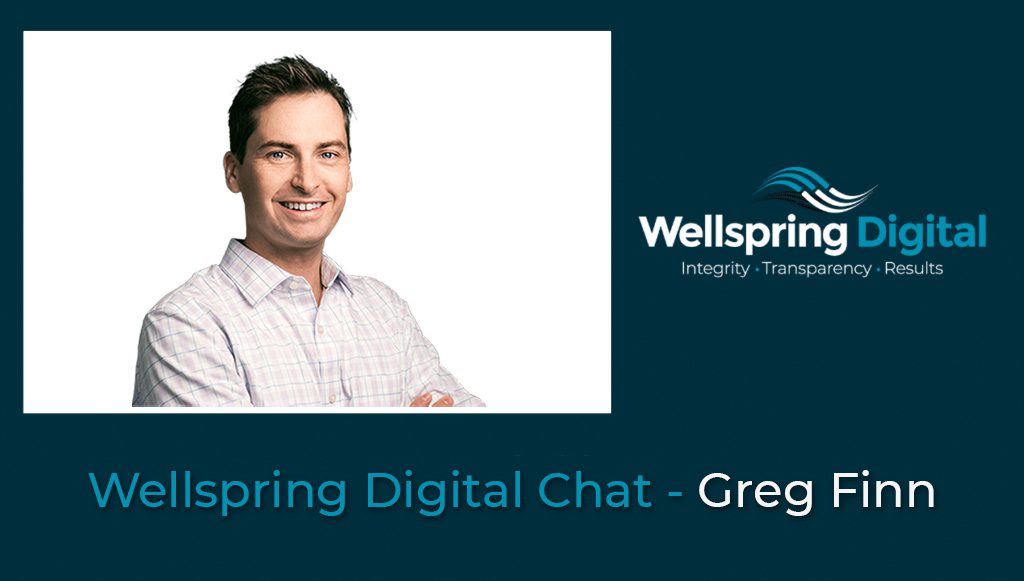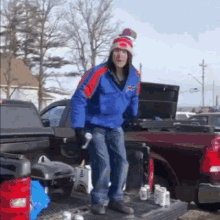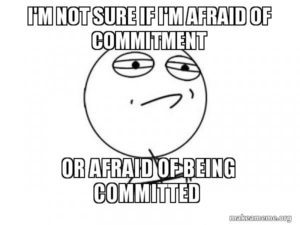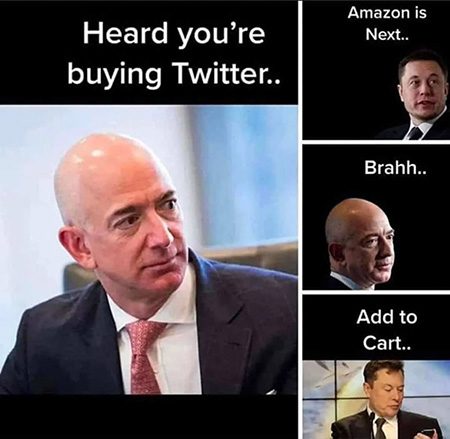I’ve been fortunate with this podcast. I have been able to talk to some of the smartest marketers around. I’ve learned a ton and met some amazing people.
In my search for this guest, I started by asking one of my most trusted resources and all-time favorite people, Kathy Bushman over at Third Door Media. I asked Kathy if she knew any PPC experts and she immediately shot back with “Greg Finn!”

So, when Kathy makes a recommendation, I listen. Greg is a Buffalo guy too. Go Bills! Greg and I dive into the following…
- Google’s Shift to Dynamic Ads
- Platform with Best Video Ad ROI
- Greg’s Process for Matching Personas to Ad Platforms
- The Ad Platform No One Is Talking About but Should Be
- The Future of PPC
There is some great insight and tips here! Enjoy!
Digital Transcription (Edited for Readability)
Introductions
Jon-Mikel Bailey: Hello, all. I am Jon-Mikel Bailey and this is the Wellspring Digital Chat series where we dissect the brains of well-known and well-respected marketers and we pull out the good stuff and we share it with you. And then we put the brains back and they’re- They’re fine.
In all fairness, we did record a brief intro. There was a problem with the audio, so we restarted. So unfortunately for our guest today, he has to hear my lame joke one more time. But anyway, I think we’re going to get through this.
So I asked one of my most trusted friends in resources, Kathy Bushman if she could make a recommendation for a PPC badass that I can interview, and then immediately she fired back, “Greg Finn.” So, Greg, you come highly recommended.
Please take a moment to introduce yourself to these good people.
Greg Finn: Thank me, Jon- A. And B, I am Greg Finn. I run an agency out of Buffalo, New York, called Cypress North.
Jon-Mikel Bailey: Go Bills.
Greg Finn: I am a Lions fan.
Jon-Mikel Bailey: Awe!

Greg Finn: Painful recently, but- but like, I’ve got some optimism now. All right, so I’m feeling good. It’s good. And we also have a digital marketing news podcast called “Marketing O’clock” that comes out every Friday.
So, it’s the news flavor of the podcast. And we have a good time.
Jon-Mikel Bailey: Awesome. Awesome. So I did a little digging before this and I did read some of your stuff.
Google’s Shift to Dynamic Ads
Jon-Mikel Bailey: I read an article you wrote back in January about the changes that Google is making to the functions of their ad manager. And, you know, every business out there has some sort of experience with working with PPC.
But I think the bulk of them think of PPC as Google, there are other platforms, but I wanted to start with Google. How do you feel about Google’s almost complete shift to dynamic ads? Do you think putting all of the customizations in Google’s hands makes sense for the user?
Greg Finn: Yeah, and when you think about the kind of full- so there are some products that are fully automated, right? Then there are automation elements, there’s bidding automation, and there’s automation in the ads. And for the most part, a lot of it makes sense from a Google standpoint. Let’s say, instead of saying you want to pay for a click if Google thinks and it’s got all this information and AI machine learning, things like that, that somebody is going to go ahead and be an actual purchaser and, you know, you might want to pay more for those people and you might think, “Hey, on average, you know, that could be $5 for doing some sort of, you know, kind of like manual bidding.”
But Google might say, “Hey, this is worth- we’re going to go up, we’re going to beat this next person here.” You know, so on the kind of face value of things, it does seem, you know, to make sense. I think putting on my, you know, I guess tinfoil hat here, I would say, is that you know, you got to think this is when you’re giving up kind of that full control that for bidding something like a performance max where you don’t even put the targeting in.
Like something like that. You’re doing that to an ad platform. Who makes- who is one of the two biggest companies in the world that makes their money off of ads? So it makes sense to be like, “Oh! Well, like, hey, we should move these bids up. Oh, your competitor should move these,” so you have to kind of take things, you know, with a grain of salt, obviously do what works with your- for your business.
But you know, we for the most part here use a variety of automation from the bidding standpoint to something like a target return on ad spend (ROAS) or target CPA. And then I’m a little bit less high on some of that performance max, like those full automation type campaigns where there’s nothing there, but if it works, it works.
And that’s our job as an agency. And we do use that for a variety of clients that it works on.
Jon-Mikel Bailey: I want one thing that you said that struck me is that as an agency owner, I like to operate as if I were a fiduciary operating on behalf of my clients, which I think really speaks volumes, not just in- in how your actions work, but sort of in the- what the underlying statement of that is saying about Google and what you were saying about, you know, them.
I’m trying not to get too conspiratorial, but like you said, ads are a huge revenue source for them. So I think people need to be aware of that – excuse me.
Greg Finn: 100%. And it doesn’t make it you know, with all this new automation, it does make it a lot harder to accurately report on things. You know, like when we have a client that comes on, we’re looking at things and saying, here’s a look at, you know, we for a lot of times with PPC, just knowing the way the rules have changed, you have to kind of bid on your own brand.
But in my mind, that’s a necessary evil. If I don’t have to do it, I turn it off instantly, never look at it again, you know? And so when we report on things, we’re like, “Here are people looking for your brand. You know, there are other people trying to advertise.” We kind of use this as a protective measure.
And then, you know, “Here’s our scalable non-branded traffic- people that might not have known us before.” And that’s usually what we’re looking at. We’re looking at kind of growing people that haven’t seen that brand before. And then when you have something like performance max, there’s now going to be some sort of brand controls rolling out, but when you can’t see that it’s branded versus not branded, it’s like, well, I’m trying to accurately communicate to my clients how much of this new business is people that have just never heard of them before, right?
People always wake up in the middle night, that Wellspring Digital like, that’s great.” No, they’ve heard you from somewhere, right? And then like you know, you sort of earn that a little bit in the past. So yeah, I think from a fiduciary-like standpoint, you know, it’s important to report on that stuff.
It’s one of those things that with some of the automation you cannot see some of those queries and cannot see what you know, how people are finding us. It’s just harder and harder to report and make sure you’re spending properly.
Jon-Mikel Bailey: The machines are taking over.
Platform with Best Video Ad ROI
Jon-Mikel Bailey: So I want to switch to video just because it’s growing in popularity. I mean, it’s grown in popularity. It’s everywhere. And I’m curious about which platform you feel is generating good ROI from a video perspective.
Greg Finn: I mean, I think it’s YouTube.
Jon-Mikel Bailey: Or samples you’ve seen.
Greg Finn: Yeah, YouTube. I mean, that’s again a Google answer here. So go back to Google ads. But, you know, just in general from some of the DSPs and a lot of the CPM bidding, I just have not ever seen that work well. Even YouTube, if you go out there and you’re doing awareness campaigns and you’re doing, you know, just a variety of CPM-based bids and things like that, I just never really see that work well.
So let me do a caveat as well. Like if you’re doing something like Facebook or, you know, video ads as well or Instagram and you’ve got some of those kinds of conversion elements towards it like this is what we’re going for. We’re not just going for awareness that can be good. But with YouTube now, again, being able to say, I’m looking at this target, CPA, you know, and I’m willing to pay X amount for this acquisition or action like those are the things that really excite me.
You know, not just saying, “Hey, we got 2000 people to see this for $10.” That’s sort of like, “Who cares?” Right?
Video Campaign for Awareness
Jon-Mikel Bailey: Right. So if a client comes to you and says, “I really want to do a video campaign around awareness,” you know, what would your advice to them be?
Greg Finn: And this is a great question, Jon, because this happens all the time. So we have a campaign around a certain number of grocery stores in the Southwest trying to drive awareness and so what we’re doing with that is we’re sending people to a landing page and tracking how far down the landing page they make it and whether or not they interact with the store finder.
Right. Okay. So- so we’re making it to say like- Yes. We have a click coming over to a site and then anybody that interacts with the store finder or swipes at the carousel. We can see that there is a little bit more engagement there. So it’s sort of like one step above it. And whenever we do anything, even like awareness style, I think you can probably figure out some sort of conversion, even if it’s a lightweight conversion that you want to go towards.
So, you know, for the most part, I think that you can do better if somebody is just like, “Hey, I just need awareness.” Like right now, there’s probably something you can do, somewhere you can send people. And then those signals also you can see, you know, if you’re using different audiences or different affinities or in-market audiences, things like that, different targeting on Facebook, you can use those and see who’s a little bit more interested.
Jon-Mikel Bailey: Maybe… Maybe they have a fear of commitment.

Greg’s Process for Matching Personas to Ad Platforms
Jon-Mikel Bailey: So what I’m curious about, and this might take up the rest of the interview, but this question is what’s your process for matching a target audience persona to an ad platform for the best results?
Greg Finn: Yeah. So first off, it’s really coming up with that persona first, right? So like and again, on this awareness side, this isn’t as much as what we do, but this is how we go about it, when we go that way. So we’ll say, you know, here it’s- we’re going for like, we come up with these personas of times will come up with like funny little names or something like that, like, you know, the plaid dad or something like that.
You know, like this dad wears plaid shirts and, you know, loves watching, I don’t know, like CSI or something, you know? I don’t know what it would be. Kind of like, have a little fun with that. But then, you know, like come up with the actual demographics and stuff and then really kind of look and see what each platform has to offer testing to fit that.
So it’s defining those personas first and then coming up with them and saying in a way that we can track them. Right? You could take a lot of these different audiences and kind of mold them together. And you generally in that way, especially if you have some sort of conversion elements, you lose the visibility. So what you sort of want to do is just stack them where you can see any of the different personas out there or any of the different, let’s say we have one that’s an affinity audience.
One that’s an in-market audience or something like that. Don’t mix them all together because then you can’t see which one’s actually working well. So instead just show each one and for like, “Hey, we’re targeting for that, like CSI, like, let’s just do that.” Not like a mix of a whole bunch of stuff together, but see them all kind of as one.
Jon-Mikel Bailey: 65-year-old farmers who like large chickens as opposed to small chickens, and they shop at Sears versus no, I don’t know.
Greg Finn: That’s an eggcellent persona there!

Jon-Mikel Bailey: You’re killing me. All right.
The Ad Platform No One Is Talking About But Should Be
Jon-Mikel Bailey: So speaking of platforms, what’s a platform, what is an ad platform that no one’s talking about but should be?
Greg Finn: So if you have good patience, I’ll start with one here. If you have good patience, I would say Twitter ads. And it’s the worst platform, that’s why. But I think that there’s been a lot less competition over there lately trying to get conversion pixels and things firing over there like it is a lot of work to get it to go the right way.
But at the same time, there are now some things that are a little bit more familiar, probably to traditional maybe Google ads advertisers where you can target different terms, different keywords, things of that nature. And there’s obvious like audience. So, you know, and obviously, there’s been a lot going on over there. In case you haven’t heard where a lot of people that had those ad budgets, you know, pulled back from there.

So I’d say that that’s one and especially because of the, you know, some of those kinds of more traditional search elements that could make sense. And then it really sort of depends on what market you’re in. One thing, if you’re D2C, Pinterest. And again, let’s say that you’re a traditional maybe PPC person that’s well-versed in search.
I mean, there’s like actual broad match phrase, match, exact match on Pinterest. Adult people are talking about it. But if you’re, anything consumer, their ad platform is actually really nice and then it really is like dependent upon what you’re doing, but you could find really niche spots on something like Reddit. You know, it’s, Reddit, there’s a subreddit for everything trust me, there are subreddits that shouldn’t exist, right?
You know, you could go in there and say like, let’s say it’s we’re advertising the show here and we want to get more listeners. There’s digital advertising, there’s marketing, there’s SCM advertising, subreddit, there’s SEO, there’s big SEO, there’s tech SEO. You know, there are a lot of different really niche elements that can that could be fantastic for targeting.
And so I think that that’s another thought, you know, to do as well. And then there’s a whole bunch more podcasts – I can keep going if you like but there are a lot more options out there too.
Jon-Mikel Bailey: Well, I think the moral of the story is that it’s important for people to be open to options other than the obvious. You know, we had a CBD client who was, you know, sort of committed for some reason to advertising on Facebook, and they just wouldn’t have it. They wouldn’t allow those ads. And we were actually able to get the ads published on Twitter and get results.
It took a little work like you said, but you never know. You know. So I think that’s good advice.
The Future of PPC
Jon-Mikel Bailey: So, what is the future of PPC in your opinion? I mean, we’ve got Chat GPT4, we’ve got Bard or whatever it’s called, and Google, and we’ve got all these machines. We’ve got, you know, Google making decisions for you. What do you see as the future of paid?
Greg Finn: Yeah, that’s a great question and I think we’ve seen a little bit of kind of how things could look, I guess, in a way where if you look at something like a dynamic, let’s say a DSA on Google where you put in an image, you put in a couple of headlines and things like that, and it kind of creates an ad for you.
They all suck! Like they’re not good. Like you look at these things and it’s like, “Wow, if I hired a creative person to make a banner ad, that would be much better.” And then I would say to like with some of the things like responsive search ads where it’s it’s Google’s sort of like newer AI- it’s not what you have to do from a search tags standpoint.
You know, you can’t get that creative unless everything is pinned. And I think with some of these elements, the ads are getting watered down, right? Like if you look at what ads look like today, just tags and things and then some of the despite, you can tell when you see a DSA, it’s like, oh, that is a DSA.
And so like when you look at those, it’s like, I look at that as an opportunity, right? Like we can do something better, you know? And I think if people start relying more and more on some things like ChatGPT- like ChatGPT is very nice as a tool. I use it to redo some keyword research, ask questions, and things like that, have a layout, and some formatting, say what is this page about, and see what it comes back with.
But to think that would replace things and if you’re using that to kind of replace your ad copy creation, I’d be very concerned. So even with some of the new images like the what is it? It’s not the Mind Journey right like that AI.
Jon-Mikel Bailey: Yeah, I was going to say it sounds like, you know, the creatives for ads are similar to AI images. You’re like, that’s AI, I can tell.
Greg Finn: Yeah, yeah, yeah. But like at the same point, how can you beat that? Like I wouldn’t say let’s like using that and just save time. I would say, how do you make something way better than this other junk that other people are going to put out here that’s using like air generation and just like, you know, all that different stuff?
So to me, I think the big thing is like now there’s API for chat, CBT, you know, that’ll be huge for different software and things like that to help put it in. And you know, here’s the look at your ads and, you know, make little changes and things like that. So for a lot of software companies that are going to be huge.
But I would say, you know, use it to assist kind of probably like I say, not to replace.
Jon-Mikel Bailey: We have a saying here. “Rule number one, don’t trust the tools.” Use this tool (points at brain) as much as possible. So I think what I’m taking from you is don’t be lazy, right? And I don’t.
Greg Finn: You took my tool (brain) out to dissect it and I got to get it put back in there.
Jon-Mikel Bailey: You’ll get it back. It’s you again. You got to read the fine print, but you know, it’s all good. Now you’ll get your brain back. Now, Greg. Okay. Kathy was right. I appreciate you coming on here and this is all great, great advice. So I’m excited to share it with the world and I really appreciate your time today.
Greg Finn: All right. Thanks so much, Jon.
Jon-Mikel Bailey: Thanks for coming. All right. Bye, everybody.
